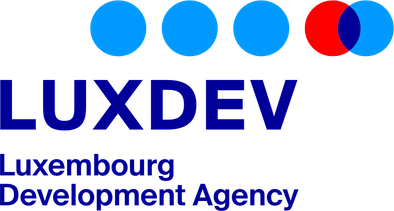Kosovo - Satellite Imagery reduces water leakages in Mitrovica
As a result of increasingly sressed water resources due to climate change and water utilities suffering considerable losses from leakages, LuxDev Project KSV/018 project looks at reducing so-called "Non-Revenue-Water" by using a NASA satellite technology which was developed to detect water on other planets. This could have an immediate impact on the reliability and sustainability of the water supply for the local population.
In developing countries, roughly 45 million cubic meters of water are lost daily, with an economic value of over EUR€ 2.5 billion per year. A World Bank study puts the global estimate of physical water losses at 32 billion cubic meters each year. If the water losses in developing countries could be halved, the saved water would be enough to supply around 90 million people around the world.
This water loss is referred to as non-revenue water (NRW), or water that is pumped and then lost or unaccounted for. NRW management allows utilities to expand and improve service, enhance financial performance, increase climate resilience and reduce energy consumption. Despite the benefits and decades of training and advocacy from international organizations, NRW reduction still receives little attention amongst those utilities which would most benefit from it – why is that?
Historically, water utilities in developing countries have focused more on safe water quality and increasing the continuous supply (on-demand) of water. Unfortunately, a similar focus has not been given to efficiency in the water supply process, and it is believed that many water utilities suffer considerable losses from leakage (high NRW).
With water resources being increasingly stressed due to climate change and growing populations, water utilities must become water-efficient throughout the entire supply process. By employing improved methods of water auditing and loss control, water utilities have potential to reduce the large volumes of treated water that are lost to leakage. Leak detection technologies have not changed much in 80 years. They continue to be costly and somewhat ineffective as companies around the world struggle to find leaks.
However, by using a technology used by NASA to find water on other planets – analysis of satellite imagery – the desired area is scanned for subterranean treated water leaks within the supply network, increasing the accuracy and number of leaks detected. Satellite based leak detection provides a non-invasive, innovative method to detect NRW and fresh water leaks from space.
The raw data from the satellite images is prepared for analysis by filtering bounces from buildings and other manmade objects, vegetation, hydrologic objects, and more. The prepared data is then analysed, using an algorithm, to track the specific spectral “signature” of potable treated water in the ground. All the possible leaks are then displayed as a GIS (Geographical Information System) report.
As part of a 50 000 EUR investment involving the cooperation of Aquasave & Utilis, LuxDev provided the Mitrovica Regional Water Company - MRWC with a satellite radar leak detection report. 93 suspected leakage sites were identified in the area, of which 90% were considered to be of high enough probability to be investigated. The leakages sites were scattered around 4 municipalities – Mitrovica South & North, Skenderaj and Vushtrri. During the second task of the activity, field verification of the probable leaks was performed by using specialised conventional detection equipment. 44 suspected sites were investigated with an 86% detection success rate, and a total of 62 leaks were detected.
On one hand, the purpose of the investment was to detect leaks in the MRWC water network and on the other hand to encourage the water company to take a proactive stance towards leak detection. On average it would be possible for MRWC to find 4 leaks per day, using this technology, which would be 400% more efficient than the industry average of 1 leak per day. This would greatly reduce non-revenue water as well as avoid major pipe burst, increasing the stability and durability of the water network, reducing maintenance and electricity costs. On top of that the beneficiaries would benefit from a higher water quality and a more reliable water supply, resulting in further benefits like higher economic productivity, improved environment & ecosystems as well as greater social and health-care savings.

